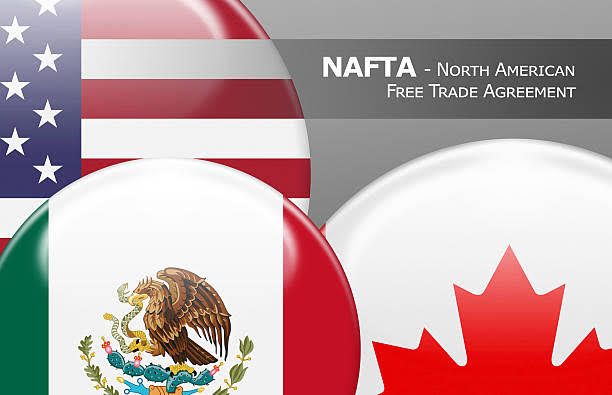Repeal NAFTA and Replace It With Free Trade

The “FT” in NAFTA may stand for “free trade,” but that doesn’t mean the North American Free Trade Agreement is really a free-trade agreement. It would have been more accurately called the North American Managed Trade Agreement, or NAMTA. Unfortunately, in the current discussions about revising the pact, the Trump administration would make it more of a managed-trade pact. We’re moving in the wrong direction.
The agreement among the United States, Mexico, and Canada went into effect in 1994. In an important respect — the elimination of tariffs on most products — it created a free-trade zone in North America. Trade among the three countries has flourished.
But in other respects NAFTA contradicts free-trade principles. After all, had the real goal been fully free trade, the three governments could have simply abolished all trade barriers. Instead, they negotiated a long, complicated agreement containing phase-outs, exceptions, and side agreements on labor, the environment, and intellectual property — all of which undercut the reason for free trade: to realize full consumer welfare from the division of labor, specialization, and comparative advantage.
NAFTA’s own statement of objectives indicates that free trade would be subject to other considerations. While the first objective is to “eliminate barriers to trade in, and facilitate the cross-border movement of, goods and services between the territories of the Parties,” the second declares an intention to “promote conditions of fair competition.”
“Fair competition,” like “fair trade,” is a common protectionist euphemism meaning that foreign producers with access to cheaper labor and resources, or subject to less stringent government regulations, shouldn’t be able to benefit fully from those advantages. That is hardly what the original advocates of laissez-faire meant by free trade.
Moreover, the “free trade” agreement embraces trade barriers against the rest of the world. Regional protectionism is still protectionism and hence anti-consumer. So even if free trade had been fully established in North America, the agreement would not have produced the global freedom Adam Smith envisioned in The Wealth of Nations, in which he wrote that “the division of labor is limited by the extent of the market.” Since the division of labor bestows inestimable benefits on mankind, the bigger the free-trade area the better.
Nevertheless, President Trump condemns NAFTA as a free-trade disaster for the United States. Considering that Mexico’s pre-NAFTA barriers to U.S. goods were higher than America’s barriers to Mexican goods and that some U.S. agricultural goods remain protected from competition, Trump’s complaint is at first hard to discern. But now that discussions on how to change NAFTA are underway, Trump’s motive is clear. What he wants is a deal that favors certain American industrial interests. What he means by fair trade is government-managed trade that would help favored American industries at the expense of foreign producers, other American industries, and consumers.
For example, NAFTA now permits automobiles to be tariff-free as long as the source of at least 62.5 percent their parts is the United States, Mexico, or Canada. Cars with a larger portion of non–North American parts are hit with a 2.5 percent tariff. This provision raises consumer prices through either the tariff or the more expensive parts. Trump wants even more micromanagement. “The administration,” Reuters reports, “has proposed raising the amount of NAFTA content in autos to 85 percent and securing 50 percent of the total for the United States. Those demands to reserve the lion’s share of automotive manufacturing for the United States helped cast a pall over a fourth round of talks to revamp the 23-year-old accord underpinning $1.2 trillion in annual trilateral trade.”
Manipulating tariff criteria to favor more-expensive U.S. (or Mexican or Canadian, for that matter) auto parts harms American consumers, among other parties worldwide.
The basic flaw in the prevailing approach is the premise that trade policy should be dictated by the interests of firms and workers — more precisely, politically influential firms and workers. If American policy makers think those producers should have priority over consumers, they will shape trade deals accordingly — harming consumers by raising prices far higher than they would see under free trade and free competition.
But that makes no sense, because we produce in order to consume. We sell goods to others so we may buy things that make our lives better. Labor and exports are what we sacrifice to obtain imports. We work to live, not live to work.
Progress is to be measured by our access to a growing array of low-priced goods, not by how many jobs are created or preserved. (Besides, trade creates more jobs than it eliminates.) Thus eliminating trade barriers, even unilaterally, is good in itself rather than a grudging concession to persuade other countries to eliminate their barriers.
In a moral society, people are free to buy from and sell to whomever they please unburdened by government favors to special interests.











